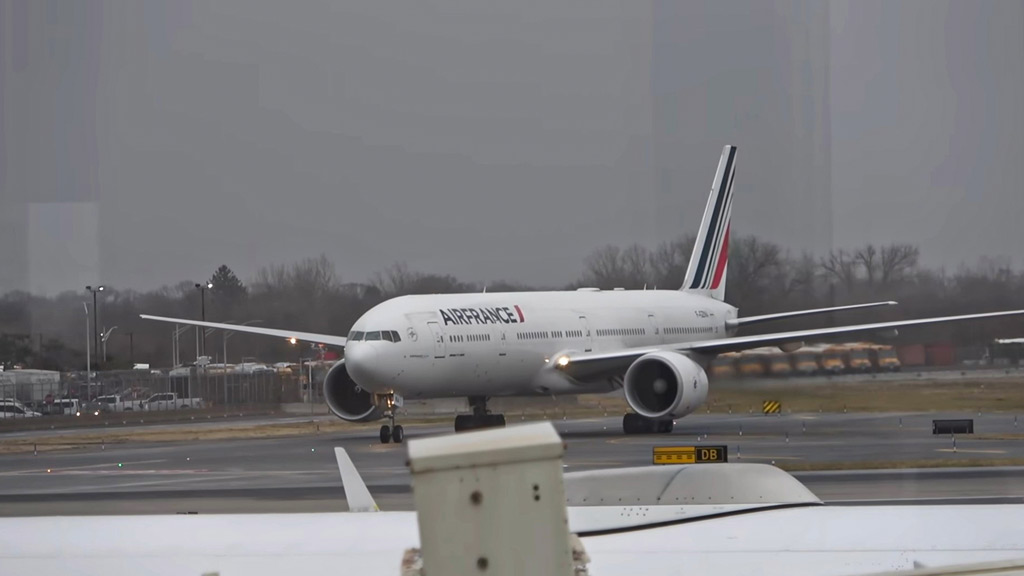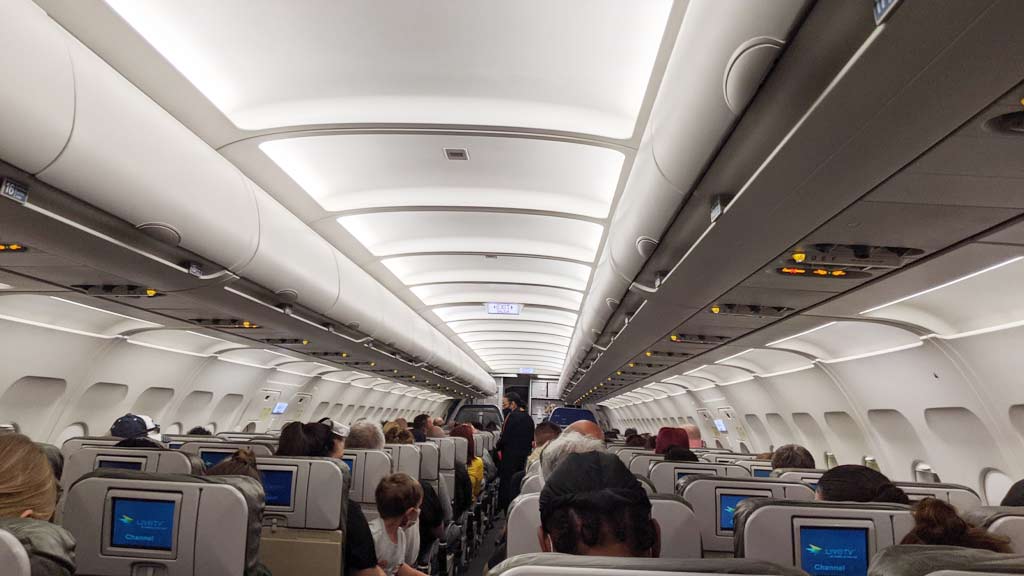Imagine you’re on a flight, looking forward to reaching your destination, when suddenly, the pilot announces a diversion.
It’s a scenario that can happen due to various reasons like medical emergencies, maintenance issues, unruly passengers, or unforeseen circumstances. Being prepared for such situations is key to navigating them smoothly.
When your plane is diverted, it can be unsettling, but knowing the general rules and procedures can help ease the process. Whether you land at a major airport or a remote location, understanding what to expect and how to react is crucial.
Remember, while it may disrupt your plans, staying calm and following guidelines will ensure a swift resolution and get you back on track.
In such instances, passengers often find themselves in unfamiliar territory. Understanding your rights, options, and how airlines handle diversions can empower you to make informed decisions.
Stay informed, stay composed, and remember, being prepared is the first step in handling a flight diversion effectively.
Understanding Flight Diversions
Flight diversions occur for various reasons, typically to ensure the safety and comfort of passengers and crew, as well as to comply with aviation regulations.
Here are some common reasons why a flight might be diverted:
Reasons Flights Get Diverted

Flights can be diverted for various reasons such as bad weather, mechanical problems, strikes, armed conflict, and natural disasters.
Pilots may also divert flights due to disruptive passenger behavior, health issues, or legal matters concerning passengers or crew.
Understanding these potential triggers for diversions can help you grasp the unpredictability of air travel and the necessity to adapt to unforeseen circumstances.
How Long Diversions Can Last
When your flight is diverted to another airport, there are two possible scenarios. Your flight might resume once conditions improve, or it may end at the diversion airport, requiring alternative arrangements by your airline to get you to your destination.
Depending on the circumstances, you might miss a connecting flight. The duration of a diversion can vary greatly, from a quick refuel to overnight stays, so it’s essential to be prepared for potential delays and changes to your travel plans.
Immediate Steps Upon Flight Diversion
When a flight is diverted, immediate steps are taken by both the flight crew and the airline to manage the situation effectively and ensure passenger safety and comfort.
Here’s a breakdown of those steps:
Stay Informed Through Airline Updates
Upon the unfortunate event of your flight diversion, it’s crucial to stay informed through timely airline updates. Remain within hearing range at your departure gate to ensure you don’t miss any important announcements from airline personnel.
These updates provide valuable information regarding the situation, the expected next steps, and any potential changes to your travel plans. Additionally, make sure to stay connected by checking for email or text notifications from the airline.
This will help you receive real-time updates and instructions on how to proceed effectively during the diversion process, minimizing any inconvenience caused by the unexpected change in your itinerary.
Communicate with Airline Staff

One of the first actions you should take when your flight is diverted is to communicate with airline staff promptly. Retrieve your airline’s contact numbers and reach out to inquire about the current situation.
Politely ask for updates on the diversion and inquire if there are alternative flight arrangements to your destination. Additionally, using social media channels to contact your airline can also be helpful in seeking assistance during this unexpected change in travel plans.
Remember, maintaining a calm and polite demeanor will facilitate quicker and more effective assistance from the airline staff.
Planning for Unexpected Layovers
When a flight is diverted, leading to an unexpected layover, passengers and airlines need to adapt quickly.
Here’s a guide on how to handle such situations effectively:
Essential Items to Carry

When facing an unexpected layover due to flight diversion, it’s crucial to have certain essentials with you.
Here’s a checklist of items to carry in your carry-on bag to ensure you’re prepared for such situations:
- Medications: Pack any necessary medications in your carry-on to avoid issues in case of an extended layover.
- Toiletries: Include a toothbrush, toothpaste, and other personal hygiene items in your carry-on for unexpected overnight stays.
- Change of Clothes: Pack a change of underwear or a spare outfit to stay comfortable during the layover.
- Contact Lens Solution: If you wear contact lenses, carry a small bottle of solution to maintain eye care.
Managing Accommodations and Transport
In case your flight diversion leads to an unexpected layover, it’s essential to stay prepared for managing accommodations and transport. Here’s what you should consider:
- Communicate: Inform someone about the change in your itinerary, especially if you were supposed to be picked up at the destination airport.
- Accommodations: If needed, be ready to arrange for accommodation at short notice in case of an overnight layover.
- Transport: Stay informed about alternative transport options to reach your final destination, especially if the airline doesn’t provide immediate travel arrangements.
Your Rights and Compensation
When a flight is diverted, passengers have certain rights and may be entitled to compensation, depending on the circumstances and applicable regulations.
Here’s an overview of what you should know:
Knowing Your Contract of Carriage
When your flight is diverted, it’s essential to understand your rights and the terms outlined in the airline’s Contract of Carriage.
This contract dictates the rules and compensation you are entitled to in case of diversions. Familiarize yourself with this document to know your rights regarding flight disruptions.
Be aware of the conditions under which the airline is obligated to provide compensation and assistance. Understanding your Contract of Carriage empowers you to assert your rights effectively in situations of flight diversions.
How to Request Compensation
If your flight is diverted, and you experience a significant delay on arrival at your final destination, you may be eligible for compensation under EC 261/2004 regulations.
To claim compensation, you should first gather all relevant information, including your flight details and any communication received from the airline regarding the diversion.
Contact the airline promptly to request compensation for the inconvenience caused by the diversion. Provide them with the necessary documentation and details of the diversion, and follow up on your claim to ensure a timely resolution.
Remember that knowing how to request compensation can make a difference in receiving the compensation you are entitled to after a flight diversion.
Frequently Asked Questions
Why do flights get diverted while en route?
Flight diversions can occur due to various reasons, primarily for fuel-related emergencies, adverse weather conditions preventing landing, mechanical issues, passenger emergencies, or security threats.
Are passengers entitled to compensation for diverted flights?
In the U.S., there is no federal law mandating compensation for diverted flights. Passengers can request compensation from the airline, but success is not guaranteed.
What prompts pilots to conduct an exterior inspection of the aircraft prior to boarding?
The outside check, or walk around, before boarding is a safety protocol where the aircrew inspects critical aircraft components for security, safety, and operational purposes.
How do airlines determine when to divert a flight?
Airlines may divert flights due to unsafe weather conditions, medical emergencies, security issues, mechanical problems, or natural disasters, prioritizing passenger and crew safety.
What are the typical costs associated with diverting a flight?
The costs of flight diversions can range from £10,000 to £80,000, depending on the aircraft size and the diversion location. Efforts are underway to minimize these occurrences through collaboration with airlines, airports, and regulatory authorities.
Conclusion
Understanding your rights and the airline’s obligations during a flight diversion is crucial for a smooth travel experience.
By being aware of compensation procedures under EC 261/2004 regulations and having the necessary documentation handy, you can confidently navigate unexpected changes and secure the compensation you deserve.
Remember to stay informed, stay calm, and communicate effectively with airline staff to ensure a hassle-free resolution in case of a flight diversion.
With the right knowledge and proactive approach, you can turn an unplanned layover into an opportunity to exercise your rights as a passenger. Safe travels!
Naim Benmayor